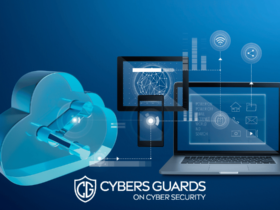Back to My Mac Remote Access is Obsolete ! Here’s What You Can Do- Apple Remote Desktop has officially shut down its remote access and file sharing service Back to My Mac on all macOS versions after 12 years of existence. The shutdown was announced in January of this year, but it did not go into effect until July 1, 2019.
Why Is Back to My Mac Significant?
Back to My Mac was first offered by Apple in 2007 as part of the Mac OS X Leopard release. It provided customers with a simple way to gain remote access to their other Mac machines via the internet. It was one of the first software for Mac devices that allowed for easy screen sharing and remote access.
Back to My Mac Features
Back to My Mac offered three extremely powerful capabilities that were critical for organisations and businesses that required remote access. The three features of Back to My Mac are listed below:
File transfer
The ability to transfer files across two Mac devices was one of Back to My Mac’s most useful features. This means you can access any file on your remote Mac desktop and transfer it to your Mac laptop from anywhere, whether you’re at home or at work.
This feature allowed Mac users to quickly access data without needing to carry a flash drive or upload files to the iCloud.
Remote access
Remote access is another useful feature of Back to My Mac. Mac users may control their distant Mac equipment from anywhere using remote access. Mac users with remote access authorization can take control of the mouse and keyboard of any Mac device.
This capability enabled users to perform chores remotely or use more powerful Mac computers while on the go.
Screen sharing
Finally, Back to My Mac gives you the option of sharing your screen with other Mac users. This Back to My Mac function facilitates collaboration among coworkers and team members.
Back to My Mac is compatible with any Mac device running Mac OS X Leopard or later. Unfortunately, Apple has opted not to support Back to My Mac in macOS Mojave.
Back to My Mac Remote Access, Screen Sharing, and File Transfer: What Are Apple’s Alternatives?
Apple gives users with some alternatives to the three primary functions of Back to My Mac in a support document provided by the company:
Use remote access with Apple remote desktop service
Apple Remote Desktop programme is a recommended alternative to Back to My Mac’s remote access capability. For $79.99, you can get it from the Apple Store.
Back to My Mac’s remote access includes similar functionality to Apple’s remote desktop. It also allows you to control the keyboard and mouse from a distance on your other Mac Macs.
It does, however, have several distinct capabilities, such as software distribution and remote management. The ability to remotely lock screens, restart, and shutdown the managed Mac machine is the most intriguing function.
File Transfer using iCloud Drive
Apple Remote Desktop App advises Mac users to use the iCloud drive as an option for file sharing. Files saved on the iCloud storage can be browsed remotely and easily moved to another device. However, the disadvantage is that files must be transferred to the cloud. The files on the Mac device are not accessible remotely.
Up to 5GB of free storage is available on the iCloud drive. Upgrades are available for users who want greater storage space.
Screen share using the building screen sharing feature
Many modern Mac devices offer screen sharing capabilities, which can be utilised instead of the Back to My Mac screen sharing service. Unfortunately, built-in screen sharing only works with Mac machines on the same network and does not support distant screen sharing over the internet.
Other Alternatives to Back to My Mac
Although the apple remote desktop programme offers alternatives to Back to My Mac, it addresses each feature separately and does not provide the same level of ease as Back to My Mac.
There are third-party options, such as ITarian’s remote access and control.
You can use ITarian’s remote access and control to:
-Applications connected to the network should have remote administrative controls.
-Use any connected device or server to access files
-Manage the network’s other users’ accessibility privileges
Conclusion
Users will need to discover alternate options for remote access, screen sharing, and file sharing between Mac devices now that Back to My Mac is no longer supported on Mac devices. Apple does offer additional options, but setting up each device individually is extremely time-consuming when compared to Back to My Mac’s one-stop solution.
Fortunately, customers have the option of using third-party apps such as ITarian. It’s simple to use and basically identical to Back to My Mac in terms of features.










Leave a Reply